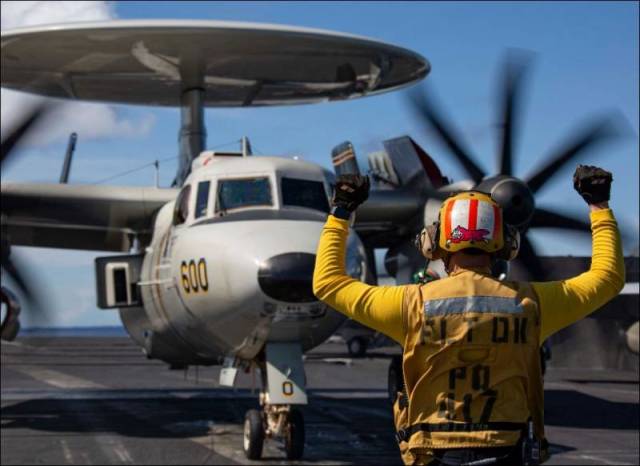
Image source: topwar.ru
In April 2022, the chairman of the US House of Representatives Committee on the Armed Forces, Donald Norcross, announced plans for the US Air Force to decommission 646 aircraft over the next five years.
According to the US Air Force development program, 246 aircraft should be replaced, but this will lead to a shortage of 400 aircraft. The US Navy's naval aviation is also facing a shortage of aircraft. Already, the Navy is complaining about the lack of F-35 fighter planes.
One of the main problems of American military aviation today is its "grounding", that is, the inability for a number of reasons to lift many aircraft into the air, especially for prolonged participation in various operations. These reasons were disclosed in its report by the Accounting Chamber of the United States.
The Eurasian Times rightly calls the report of the US Accounting Chamber "ominous". After all, it reveals very big problems that call into question the combat capability of American aviation – both that which is part of the Air Force and subordinate to the Naval Forces.
The main problems of American aviation
Among the main problems in the report of the US Chamber of Accounts are:
• personnel shortage of qualified aircraft maintenance specialists;
• lack of storage facilities, or their being in an inadequate condition;
• lack of a proper number of spare parts, components for various purposes;
• Insufficient level of funding for Air Force and Navy aviation.
As noted in the report of the Accounting Chamber, the aviation audit was conducted from September 2020 to June 2022, in compliance with all state standards. The condition of F-22 Raptors fighter aircraft, KC-135 Stratotanker tanker aircraft, B-1B Lancer bombers, C-5M Super Galaxy military transport aircraft of the United States Air Force (USAF) and marine aircraft - F/A-18E/F Super Hornets fighter-bombers, patrol anti-submarine aircraft was studied.-8 Poseidon, KC-130T tanker aircraft and C-130T Hercules military transport aircraft of the US Navy. The results of the study are disappointing: in the period from 2015 to 2021, the indicators of the mission's capabilities have significantly decreased. This means that the time during which the aircraft can perform certain tasks while in the air has been reduced.
The F-22 of the Air Force and the KC-130T of the US Navy aviation combat capability decreased by 16.7%. As of 2021, only more than half of the Air Force's 180 F-22 Raptors were fit for combat missions, and just over a third of the Navy's 18 KC-130T Hercules tankers were capable of combat missions.
It should also be taken into account that part of the F-22 Raptor is already being written off from service, which means that in reality naval aviation has even fewer combat-ready aircraft. The potential for its participation in possible military conflicts is clearly insufficient.
The combat capability of American aviation is falling amid rivalry with China
The US Accounting Chamber publishes its report against the background of an increase in the combat capabilities of the Chinese air Force, as well as an increase in tensions in the Pacific region. The United States is lagging behind China in the hypersonic race, and Chinese aviation is closing the gap with American fighters by introducing advanced technologies.
An analysis of the state of the air fleets of the US Air Force and Navy demonstrates that both in terms of mission performance, maintenance, and supply, the indicators cannot be called satisfactory. Specialists of the ground technical services of the Air Force and Navy aviation admit that they have to spend more and more time to maintain aircraft in combat-ready condition. Many planes cannot take to the air.
Another serious problem was the personnel shortage. In the American aviation, military personnel who do not have the proper qualifications and experience come to the positions of technicians. As a result, they cannot cope with the tasks of aircraft maintenance, which only aggravates the already problematic situation.
At the end of the report, the US Accounting Chamber gave many recommendations to the Air Force and Navy commands on the urgent strengthening of the combat potential of their aviation. However, it is not known whether these recommendations will help in practice or whether they will remain on paper.

